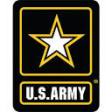Army seeks Countering Weapons of Mass Destruction OTA
 On July 31, the U.S. Army posted information about its Countering Weapons of Mass Destruction Other Transaction Agreement (Solicitation Number: W15QKN-17-X-0AOT). The Government requests all interested parties submit a response to this notice as a single (.doc or .pdf) file within ten (10) calendar days of this notice.
On July 31, the U.S. Army posted information about its Countering Weapons of Mass Destruction Other Transaction Agreement (Solicitation Number: W15QKN-17-X-0AOT). The Government requests all interested parties submit a response to this notice as a single (.doc or .pdf) file within ten (10) calendar days of this notice.
The Army Contracting Command – New Jersey (ACC-NJ), on behalf of the Office of the Assistant Secretary of the Army for Acquisition, Logistics, and Technology (ASA(ALT)) and the Joint Program Executive Office for Chemical and Biological Defense (JPEO-CBD) is releasing this notice to inform interested parties about the Government’s intent in establishing an Other Transaction Agreement for Prototype Projects under 10 U.S.C. 2371b (OTA) with a new or established consortium to develop and mature technologies in the critical field of Countering Weapons of Mass Destruction (CWMD).
The Government, in conjunction with the consortium, shall perform coordinated research and development projects designed to enhance mission effectiveness and to develop and mature technologies in the field of countering weapons of mass destruction. Possible requirements would encompass activities that span all phases of acquisition as described in the DODI 5000.02, from the development and execution of the Materiel Development Decision (MDD) through the Materiel Solution Analysis (MSA) Phase, Technical Maturation/Risk Reduction (TMRR) Phase, Engineering and Manufacturing Phase (EMD) and the Production and Deployment Phase (including both Low Rate Initial Production (LRIP) and Full Rate Production (FRP)). The desired consortium for this OTA should have the full breadth, depth, ability, and expertise to support high-level technologies as they relate to Countering Weapons of Mass Destruction in the following six (6) domains (non-inclusive):
Counter-Proliferation Technologies and Capabilities: To enable Special Forces, as well as theater special operating forces, and CBRN units to operate in complex environments to support countering proliferation of weapons of mass destruction/CBRN. This can include capabilities for situational awareness and information systems, advanced sensors and platforms, unmanned systems and robotics, sensitive site exploitation and forensics, and chemical and biological intelligence, surveillance and reconnaissance capabilities. Possible requirements include:
• Development/enhancement of a hand-held, rapid biological detection and identification capability for special operating forces in support of sensitive site exploitation (SSE) missions and for identification during offensive and direct action missions.
• Development/enhancement of a safe, robust, sample collection capability for use by special operating forces, technical support working groups and crisis response forces operating in support of SSE missions.Defensive Operations: To rapidly develop, demonstrate, implement and transition technologies to defend DoD personnel, facilities, and materiel. This includes technologies to gain and maintain situational awareness and understand of the actions of adversaries. Related areas of interest include technologies for detection, analytics, vulnerability assessments, and operational readiness. Possible requirements include:
• Development/enhancement of a sensor system that can non-intrusively detect and identify chemical warfare agents and other threat materials.
• Development/enhancement of procedures and methods to work more closely with civil support teams and all components of the armed forces to equip them with capabilities to protect against CWMD threats.Hazard Mitigation: To rapidly develop, demonstrate, implement and transition technologies to improve concepts and designs that address the ability to safeguard or decontaminate personnel, facilities, and materiel. Related areas of interest include non-intrusive diagnostics, transport/removal, and ability to destroy or neutralize CWMD threats. Possible requirements include:
• Development/enhancement of medical countermeasures to vaccinate and protect the Warfighter from potential exposures to CWMD threats.
• Development/enhancement of a system or system of systems that can be used to neutralize and dispose of bulk CWMD threats.Threat Protection: To rapidly develop, demonstrate, implement and transition new materials and technologies to meet individual and collective protection requirements. Related areas of interest include ocular, respiratory, percutaneous, and materiel protection. Possible requirements include:
• Development/enhancement of a capability for protecting the interior of critical airlift assets from cross-contamination by chemical and biological contaminated personnel and equipment under transport.
• Development/enhancement of a safe, suitable and effective self-contained breathing apparatus that supports special operating forces specific requirements for the execution of CWMD missions.Experimentation and Innovation: To rapidly develop, demonstrate, implement and transition improved concepts and technologies that support advanced technology and/or enhanced capability demonstrations including new ideas for improved testing. Possible requirements include:
• Development/enhancement of an integrated set of detection, identification, situational awareness, and decision support capabilities that have the ability to support a Commander’s decision making process in real-time.
• Development/enhancement of a capability that allows the utilization of global defense laboratories to compress the time between the discovery, detection, or encounter of a CWMD threat to a decision for combating and addressing the threat.Emerging Technologies: To rapidly develop, demonstrate, implement and transition proposed technologies, systems, processes, concepts, or designs that exhibit new or innovative approaches to advance engineering development. Areas of interest include autonomy, analytics, decision-support capabilities, biotechnology, early warning, and material science.
Full information is available here.
Source: FedBizOpps








